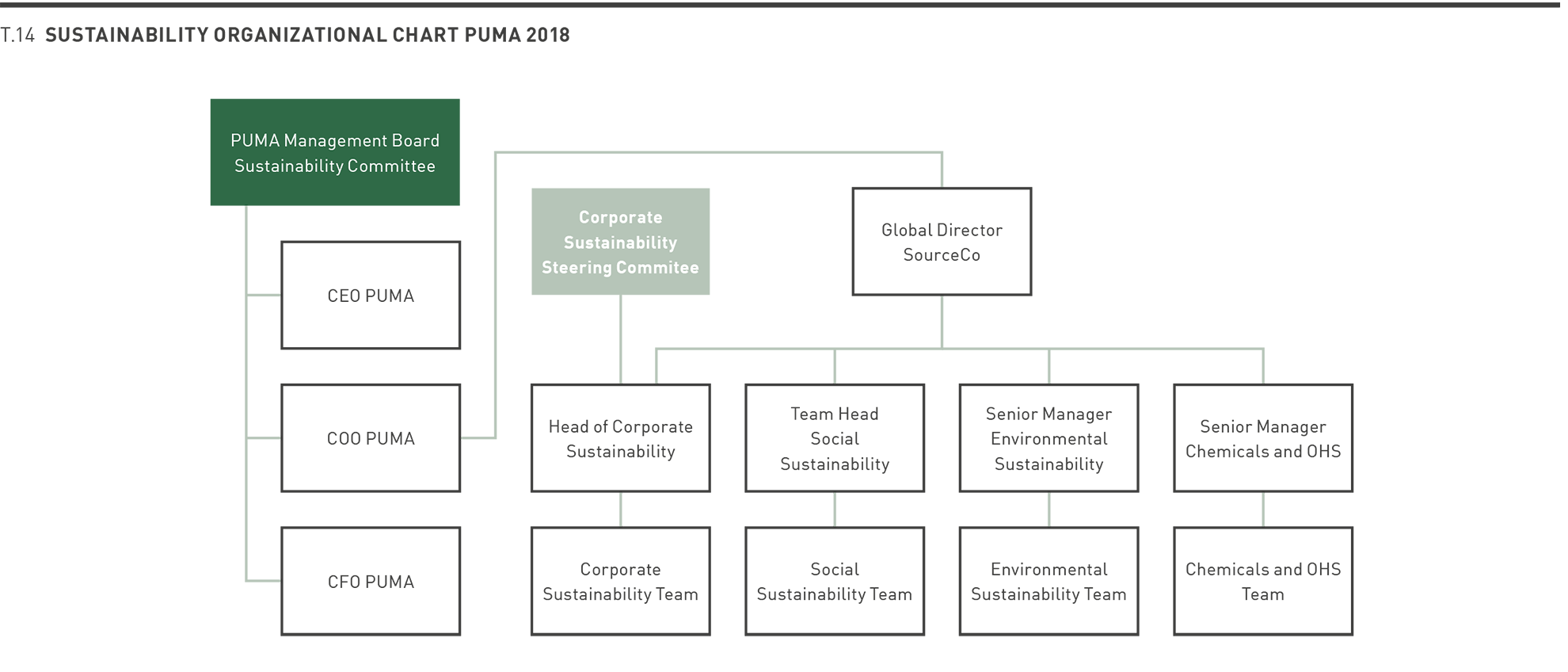Where We Are Going
In order to best serve the needs of a quickly evolving planet and the communities that rely on it, PUMA is committed to ensuring that our sustainability strategy remain dynamic to align our vision for the future with the most relevant needs of the communities we serve. Following our spin-off from Kering and in an effort to keep our own priorities as relevant and impactful as possible to meet current challenges and anticipate future ones,
PUMA introduced a new sustainability organizational structure and conducted a review of our list of top priorities in 2018 to inform our current strategy and optimize the focus of our efforts in 2019.
To be able to move faster on each thematic program area, we appointed separate leads for Social and Environmental Sustainability as well as for Chemicals and OHS. In order to better work with our suppliers where the impact is greatest, our social and environmental leads are both based in Asia.
The highest-ranking governance body at PUMA in terms of sustainability is the Management Board of PUMA SE. The Management Board is informed and consulted about PUMA’s sustainability strategy and performance during regular meetings with the Global Director SourceCo and Head of Sustainability.
Updating our Priorities for 2019
At PUMA, we define materiality by gathering feedback from our stakeholders to help us identify and focus on PUMA’s most material aspects from the sustainability perspective as well as the highest influence on business success. To ensure that our current sustainability strategy is actively supporting the United Nations Sustainable Development Goals (“SDGs”), we conducted a review of those topics we have classified as most material to inform our strategy and drive our efforts.
This review analyzed our 10FOR20 targets alongside the SDGs and global sustainability trends and included engaging with our internal and external stakeholders to seek their input as we refined our strategy. Building on previous exercises, the results confirmed that most of the topics covered by our current strategy continue to be important and should remain in focus in the upcoming years. These include human rights, worker health and safety, chemical management and addressing the threat of climate change. In addition, we identified new topics which we found to be increasingly relevant, such as sustainable product design, innovation around plastics and packaging, and circularity.
The results of our updated materiality analysis were shared with the PUMA Management Board and provided us with an refreshed list of emphases for our sustainability strategy going forward that maps to our 10FOR20 targets. These are our most material topics:
Our Priorities |
|
|
|
Our Vision for 2030
As we approach 2020, we have also begun to build the foundations for our 2030 vision, using our trajectory thus far, as well as scientific projections of future environmental conditions, as a platform on which to shape our strategy and establish concrete goals.
During the year 2019 we will work on our sustainability targets beyond 2020. Building on our rich history in sustainability efforts and the renewed materiality analysis from 2018, we will consult our most important stakeholders before finalizing our new target set – which again will aim to maximize the positive impact we create for our customers and athletes, but also employees, suppliers, and communities around us, as well as for the planet.




